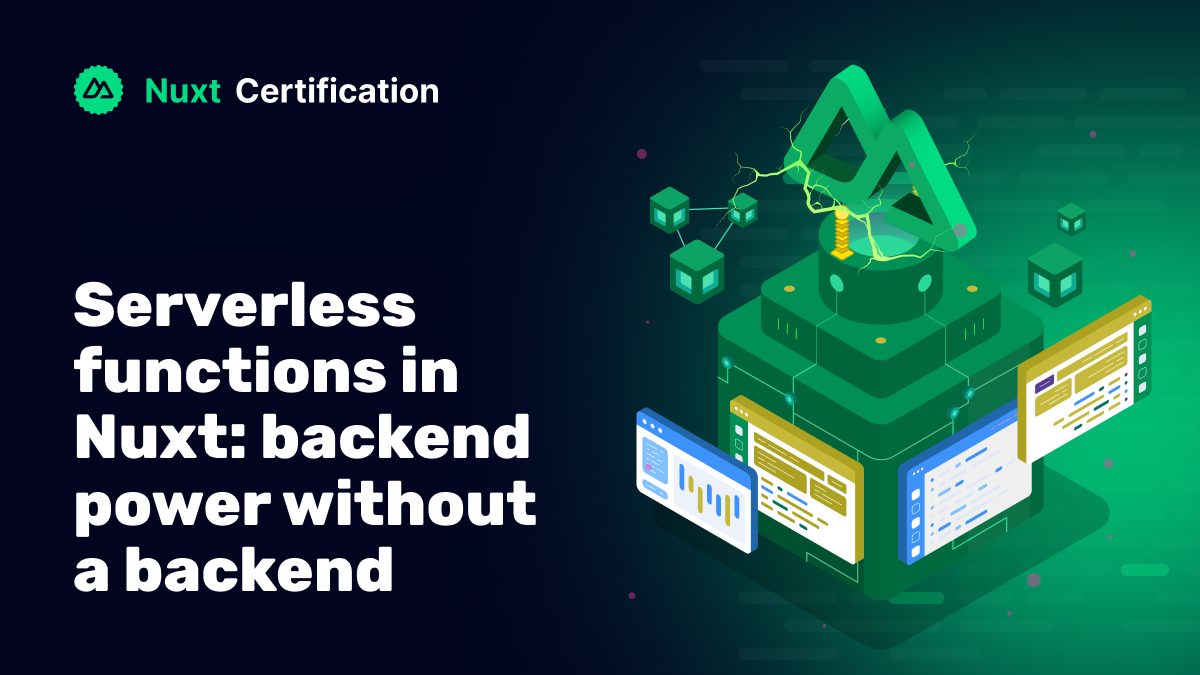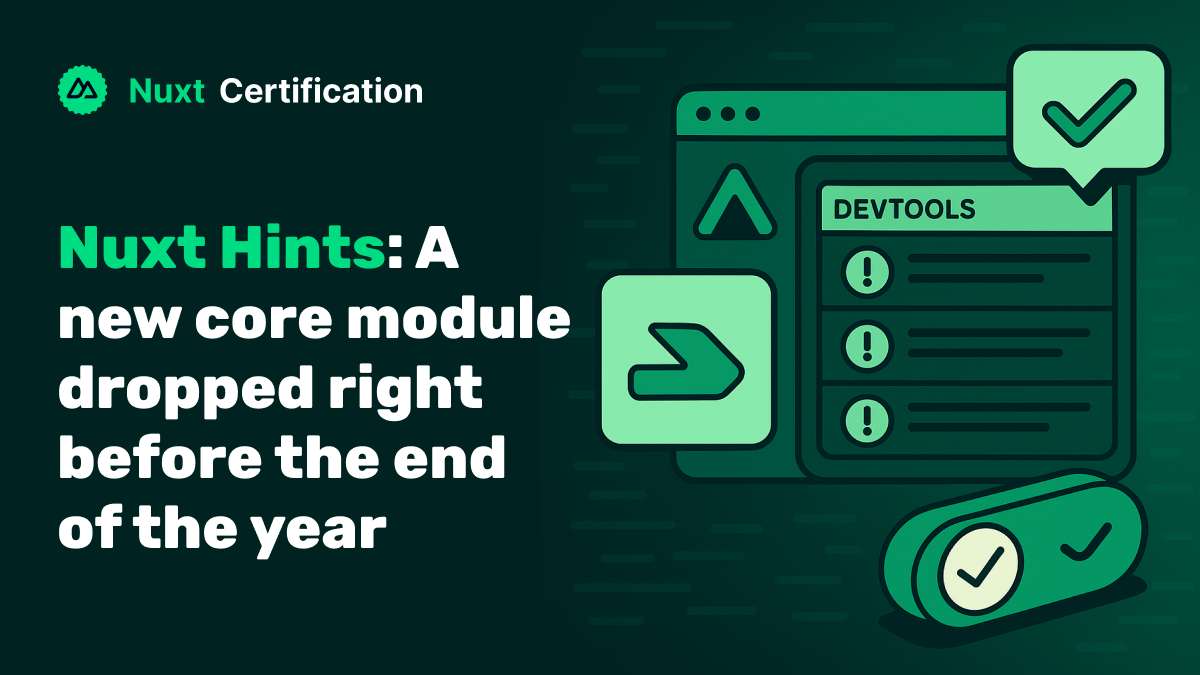
Serverless functions in Nuxt: backend power without a backend
Serverless functions are tiny pieces of code that run on demand in the cloud. You don’t provision servers or infrastructure, or write scaling rules. Cloud providers handle the underlying infrastructure, automatically scaling resources based on demand. They’re perfect for lightweight APIs, form handlers, webhooks, simple auth endpoints, and glue code.
Reza Baar
October 8, 2025
How Nuxt does it (Nitro + H3)
Nuxt has built-in support for serverless functions via Nitro (its server engine). Nitro compiles your server code to many targets (Node, Vercel, Netlify, Cloudflare Workers, etc.) and runs on top of H3, a tiny, fast HTTP framework.
You write your server-side logic inside the server/api/ folder. Each file becomes an API endpoint automatically.
// server/api/hello.ts
export default defineEventHandler(() => {
return { message: 'Hello from serverless' }
})
This function will respond to GET /api/hello with a JSON object. That’s it. Visit /api/hello in your browser or useFetch() from your frontend, and you get:
{ "message": "Hello from serverless" }
Calling Your APIs from the Frontend
You can use useFetch(), useAsyncData(), or $fetch() to call these functions in your Vue components or pages.
<script setup>
const { data } = await useFetch('/api/hello')
</script>
<template>
<p>{{ data.message }}</p>
</template>
Deployment
Nuxt works with Vercel, Netlify, Cloudflare, etc. Just push your code and your functions will auto-deploy as serverless endpoints.
- Vercel → Serverless Functions
- Netlify → Netlify Functions
- Cloudflare → Workers
You don’t need to configure anything manually — just push your code.
Quick Tips to Not Shoot Yourself in the Foot
- Don’t trust inputs, always validate.
- Use environment variables for anything secret.
- Keep functions small and focused.
- Handle errors properly.
- Don’t block the event loop with long-running tasks (offload to queues if needed).
Common Use Cases
- Form submissions
- Email sending
- API proxies
- Auth endpoints
- Data fetching or caching
- Webhooks
Wrap Up
With Nuxt and Nitro, serverless functions are just regular files that do backend magic. No setup, no stress. Whether you need a contact form endpoint, a webhook handler, or a simple API proxy, you can build it in minutes.
No server management required.
More certificates.dev articles
Get the latest news and updates on developer certifications. Content is updated regularly, so please make sure to bookmark this page or sign up to get the latest content directly in your inbox.

Controlled vs Uncontrolled Components in React
Understanding controlled vs uncontrolled in React is about one question: who owns the state? Learn both meanings for form inputs and component design patterns.
Aurora Scharff
Dec 8, 2025

The 8 JavaScript Errors Every Developer Should Understand
Understanding JavaScript errors is essential for debugging efficiently. Discover the 8 native error types with clear explanations and practical examples.
Martin Ferret
Dec 5, 2025

Nuxt Hints: A new core module dropped right before the end of the year 🎁
The newest and hottest Nuxt module that was released right before the end of 2025: Nuxt Hints It gives real-time feedback on your app’s performance, accessibility, and security.
Reza Baar
Dec 3, 2025
Looking for Certified Developers?
We can help you recruit Certified Developers for your organization or project. The team has helped many customers employ suitable resources from a pool of 100s of qualified Developers.
Let us help you get the resources you need.

(a Cisco company)